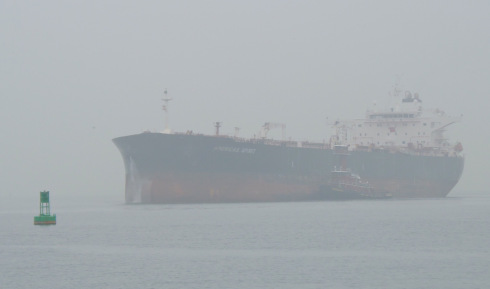Fog can develop quickly, reducing visibility to just a few yards and leaving you confused about your boat’s position and the obstructions around you. Limited visibility raises the risk of a collision, so it’s important to adapt to the conditions and take preventive action. Here are 5 steps to remember when the weather closes in:
1. Slow Down or Stop. You need to be able to avoid what appears in front of you, and you won’t be able to do that if you are zooming around. The old saying, “Be able to stop in half the distance of visibility” is very good advice. Remember, slower is better!
If you find yourself with virtually no visibility and don’t feel confident of your ability to navigate through the thick stuff, there’s only one appropriate strategy: stop. If you’re in a high-traffic area, in shallow water close to shore, or in a shipping lane, then you should almost certainly proceed slowly out of harm’s way, plotting and following a compass course that will take you directly to safer and, ideally, sheltered water to drop anchor. Don’t forget to ring your bell for 5 seconds every minute while at anchor. Post as many lookouts as you have on board and listen intently for the sounds of other vessels. If you hear a vessel approaching, sound the optional one short – one prolonged – one short blast to notify them of your presence.
2. Make Your Presence Known. Turn on your navigation lights and make some noise. Fog signals must be sounded, the time interval specified in the Navigation Rules is the minimum:
Vessel Required Sound Signal
Power-driven vessel making way One prolonged blast every two minutes
Power-driven vessel not making way (stopped) Two prolonged blasts every two minutes with
a one second interval between them
Sailing Vessel, vessel restricted in ability One prolonged blast followed by two shorts
3. Post a Lookout. A crew member on the bow has the advantage of not looking through clear curtains or a windshield. Plus, he or she is closer to any boat, marker or flotsam you might encounter so will see it first. If possible, post a lookout at the stern as well, and have them swap locations periodically to keep them sharp.
4. Listen. Boats, buoys and lighthouses all make noise, and you’ll hear them before you see them. Slamming screen doors, crashing surf or the music of an ice cream truck can help you zone in on land. Of course, you can’t hear any of this with the motor roaring, so slow down. If your engines are noisy, periodically shift into idle, or even shut them down for a minute to listen for faint fog signals. The transmission of sound in foggy conditions is tricky, so if you hear something don’t jump to a quick conclusion about its direction and distance. Listen some more.
5. Radar. If you’ve got it, know how to use it. Practice working with your radar while moving about in good weather so you won’t be fumbling with it when you really need to know what’s around you in the fog.
